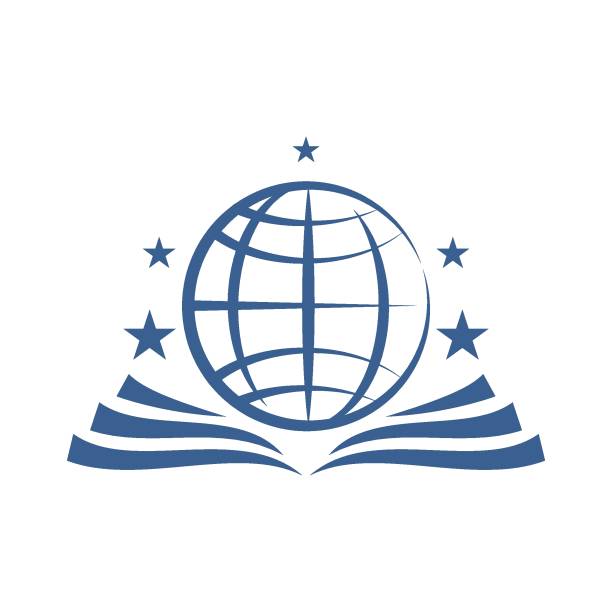In the fast-paced world of technological advancements and intellectual property protection, nations are increasingly recognizing the importance of collaboration in the field of patents. Bilateral and multilateral patent cooperation agreements have become vital tools for fostering innovation, encouraging research and development, and ensuring that intellectual property rights are respected on a global scale. This blog explores the concepts of bilateral and multilateral patent cooperation, their significance, and how they contribute to the growth of innovation in a interconnected world.

Understanding Patents
Before delving into bilateral and multilateral cooperation, it’s essential to grasp the fundamentals of patents. A patent is a legal document granted by a government that gives an inventor the exclusive right to make, use, and sell an invention for a specified period, usually 20 years from the filing date. Patents are crucial for incentivizing innovation by providing inventors with the assurance that their efforts will be protected and rewarded.
Bilateral Patent Cooperation
Bilateral patent cooperation involves agreements between two countries to mutually recognize and respect each other’s patent system. These agreements streamline the process for inventors seeking patent protection in both countries, reducing redundancy and saving time and resources. Key aspects of bilateral patent cooperation include:
1. Expedited Examination
One of the primary benefits of bilateral cooperation is expedited examination. Under these agreements, if a patent is granted in one country, the other country involved will often accelerate the examination process. This encourages inventors to seek patent protection in both countries without facing extended waiting periods.
2. Priority Claims
Bilateral agreements often allow inventors to claim priority from an earlier application filed in the other country. This means that if an inventor files a patent application in one country and later decides to seek protection in another, they can benefit from the filing date of the first application, providing an advantage in the examination process.
3. Shared Resources
Countries entering into bilateral agreements may share resources, expertise, and best practices in patent examination. This collaboration enhances the overall efficiency and quality of the patent systems involved, benefiting inventors seeking protection in those jurisdictions.
4. Harmonization of Standards
Bilateral cooperation can contribute to the harmonization of patent standards between the participating countries. This harmonization simplifies the process for inventors by reducing the need to navigate significantly different legal systems and requirements.
Examples of successful bilateral patent cooperation agreements include those between the United States and the European Patent Office (EPO), Japan and the United States, and many others. These agreements have facilitated the global exchange of innovative ideas and technologies, promoting cross-border collaboration.
Multilateral Patent Cooperation
Multilateral patent cooperation extends beyond bilateral agreements, involving three or more countries working together to create a framework that simplifies and harmonizes patent procedures on a broader scale. The most notable example of multilateral patent cooperation is the Patent Cooperation Treaty (PCT), administered by the World Intellectual Property Organization (WIPO). Key aspects of multilateral patent cooperation include:
1. PCT System
The PCT is an international treaty that simplifies the process of filing patent applications in multiple countries. It provides a centralized filing system where inventors can file a single international application, known as a PCT application, instead of filing separate applications in each desired country. This centralization simplifies the administrative process and provides a standardized format for patent applications.
2. International Search and Preliminary Examination
PCT applications undergo an international search and preliminary examination. The search identifies prior art relevant to the invention, while the preliminary examination assesses the patentability of the invention. These processes provide inventors with valuable information early in the patent application process, helping them make informed decisions about pursuing patent protection in specific countries.
3. Flexibility and Cost Savings
The PCT system offers inventors the flexibility to delay the decision on which specific countries to seek patent protection in, providing a cost-effective approach. Instead of filing individual applications in multiple countries upfront, inventors can defer the costs associated with national phase entries until they have a clearer understanding of the commercial potential of their invention.
4. Global Reach
The PCT system has a global reach, with over 150 member countries as of the last update. This extensive network allows inventors to seek patent protection in a wide range of jurisdictions through a single international application, simplifying the complex process of obtaining global patent rights.
Bilateral vs. Multilateral Cooperation: A Comparative Analysis
While both bilateral and multilateral patent cooperation mechanisms aim to facilitate the international patenting process, they differ in scope, complexity, and the number of countries involved. Understanding the comparative advantages of each approach is crucial for inventors, businesses, and policymakers seeking to navigate the global intellectual property landscape.
Scope of Cooperation
- Bilateral Cooperation: Involves agreements between two countries, fostering direct collaboration between those specific jurisdictions. The scope is narrower compared to multilateral cooperation.
- Multilateral Cooperation: Involves agreements between three or more countries and often extends to a global scale. The scope is broader, covering a larger number of jurisdictions.
Administrative Simplification
- Bilateral Cooperation: Streamlines the patenting process between two specific countries, reducing administrative hurdles for inventors seeking protection in those jurisdictions.
- Multilateral Cooperation: Offers a more comprehensive approach by providing a centralized filing system and standardized procedures, simplifying the administrative process for inventors seeking protection in multiple countries.
Cost Efficiency
- Bilateral Cooperation: Reduces costs associated with redundant administrative procedures between two countries. However, inventors may still incur expenses related to filing and prosecution in each jurisdiction.
- Multilateral Cooperation: Offers significant cost savings through the centralized PCT system, allowing inventors to delay expenses related to national phase entries until they have a clearer understanding of the commercial potential of their invention.
Global Reach
- Bilateral Cooperation: Provides targeted collaboration between specific countries, and inventors need to enter into separate agreements for each desired jurisdiction.
- Multilateral Cooperation: Enables inventors to access a global network of over 150 countries through a single international application, offering a comprehensive solution for those seeking widespread patent protection.
Successful Implementations
a. European Patent Convention (EPC)
The European Patent Convention is an example of a successful multilateral cooperation framework. It establishes a single patent application and examination procedure for 44 European countries, streamlining the process for inventors seeking protection across the European continent.
b. Patent Prosecution Highway (PPH)
The Patent Prosecution Highway is an example of successful bilateral cooperation, with multiple countries participating in various PPH programs. For instance, the PPH program between the United States Patent and Trademark Office (USPTO) and the Japan Patent Office (JPO) allows applicants to leverage the examination results from one office to expedite the examination process in the other.

Challenges and Criticisms
While bilateral and multilateral patent cooperation mechanisms offer substantial benefits, they are not without challenges and criticisms. Addressing these issues is crucial for optimizing the effectiveness of these collaboration frameworks.
Harmonization of Standards
- Challenge: Achieving complete harmonization of patent standards remains a significant challenge, especially in multilateral cooperation. Differences in legal systems, examination procedures, and patentability criteria can complicate the process for inventors seeking protection in multiple jurisdictions.
- Solution: Ongoing efforts to align patent practices and standards through international forums, such as WIPO, are essential for minimizing discrepancies and ensuring a more consistent global patent system.
Resource Allocation
- Challenge: Allocating resources, expertise, and funding for effective collaboration can be challenging, particularly in multilateral agreements involving numerous countries.
- Solution: Continued commitment from participating nations to resource-sharing initiatives, capacity-building programs, and the exchange of best practices can help overcome resource-related challenges.
Enforcement and Compliance
- Challenge: Ensuring consistent enforcement and compliance with the terms of bilateral and multilateral agreements can be complex, particularly when legal systems and cultural contexts vary widely.
- Solution: Strengthening international cooperation on enforcement mechanisms, dispute resolution, and mutual recognition of patent decisions can enhance the overall effectiveness of collaboration frameworks.
Future Trends and Emerging Technologies
As technology continues to advance, the landscape of innovation and intellectual property evolves. Several trends and emerging technologies are shaping the future of patent cooperation:
1. Artificial Intelligence (AI) and Patents
AI is playing an increasingly significant role in innovation, and patent offices are exploring ways to incorporate AI tools in the patent examination process. Bilateral and multilateral cooperation will be crucial in establishing common standards for AI-assisted patent examinations to ensure consistency and fairness.
2. Green Technology and Sustainable Innovation
The global focus on sustainability and environmental conservation is driving innovation in green technologies. Bilateral and multilateral agreements can facilitate the exchange of knowledge and technologies related to sustainable practices, encouraging collaboration in addressing pressing global challenges.
3. Blockchain and Intellectual Property Management
Blockchain technology has the potential to revolutionize intellectual property management by providing a secure and transparent system for tracking ownership, transfers, and licensing of patents. Collaboration between countries will be essential in establishing interoperable blockchain-based systems for patent management.
Conclusion
Bilateral and multilateral patent cooperation agreements play a crucial role in shaping the global innovation landscape. These collaboration frameworks streamline the patenting process, encourage cross-border research and development, and contribute to the harmonization of patent standards. As technology continues to advance and new challenges emerge, the importance of international cooperation in the field of intellectual property will only grow.
Governments, businesses, and inventors must actively engage in these collaboration initiatives, fostering an environment that promotes innovation while addressing challenges related to harmonization, resource allocation, and enforcement. Through sustained efforts and a commitment to global cooperation, the world can create a more integrated and efficient patent system that benefits inventors and society as a whole.

